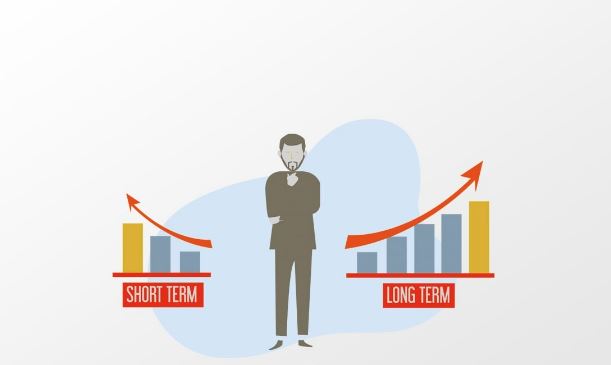Investing in financial markets can take various forms, with long-term investing and short-term trading being two prominent strategies. Each approach has its advantages and disadvantages, and the best choice depends on an individual’s financial goals, risk tolerance, and time commitment. Here’s a detailed comparative analysis of the benefits of long-term investing versus short-term trading.
The Benefits of Long-Term Investing vs. Short-Term Trading
Benefits of Long-Term Investing
- Wealth Accumulation Over Time
– Compound Growth: Long-term investing allows for the power of compounding to work in your favor. Reinvested dividends and interest can lead to exponential growth over time.
– Historical Returns: Market history shows that investments tend to appreciate over the long term. Historically, stock markets have provided returns averaging around 7-10% annually when considered over several decades.
- Lower Transaction Costs
– Fewer Trades: Long-term investors typically buy and hold assets, resulting in fewer transactions and lower fees. This can allow for a more significant portion of returns to be kept rather than lost to trading costs.
- Tax Advantages
– Capital Gains Tax: Long-term investments may qualify for lower capital gains tax rates (applicable when assets are held for over a year) compared to short-term trades, which are often taxed at higher ordinary income rates.
- Less Stress and Volatility
– Market Fluctuations: Long-term investors are less affected by short-term market volatility. They can ride out market swings and avoid the stress of daily price changes.
– Focus on Fundamentals: Long-term investors can concentrate on the underlying fundamentals of their investments rather than worrying about short-term price movements.
- Simplicity and Time Efficiency
– Less Monitoring Required: A long-term investment strategy generally requires less active management and monitoring. This simplicity makes it easier for individuals to maintain their investments without constant attention.
- Better Psychological Stability
– Emotional Discipline: Long-term investing fosters a disciplined approach, encouraging investors to remain committed to their plans and avoid impulsive decisions based on market hype or panic.
Benefits of Short-Term Trading
- Quick Profits
– Immediate Returns: Short-term trading can lead to fast profits by capitalizing on market movements, allowing traders to quickly realize gains.
– Leverage Opportunities: Short-term traders often employ leverage, which can amplify potential returns (though it also increases risk).
- Flexibility and Adaptability
– Market Conditions: Short-term trading enables investors to react quickly to market conditions, news, economic reports, or earnings releases, seizing opportunities as they arise.
- Diverse Strategies
– Variety of Techniques: Traders can utilize various strategies, such as day trading, swing trading, or momentum trading, tailoring their approach to capitalize on market volatility.
- Limiting Exposure
– Reduced Risk Over Time: By holding positions for shorter periods, short-term traders may limit exposure to long-term events that could derail their investment thesis.
- Market Learning
– Active Engagement: Engaging in short-term trading can provide traders with valuable insights into market dynamics, trends, and technical analysis, potentially sharpening their investing skills.
Conclusion
Choosing between long-term investing and short-term trading depends on individual goals, risk tolerance, and time availability. Long-term investing offers benefits such as compounding growth, lower costs, tax advantages, and reduced stress. In contrast, short-term trading can provide opportunities for quick profits, flexibility, and active market engagement.
Ultimately, many successful investors use a blend of both strategies to balance risk and reward effectively. Consider your financial situation, investment objectives, and emotional readiness when deciding which approach aligns best with your goals.


